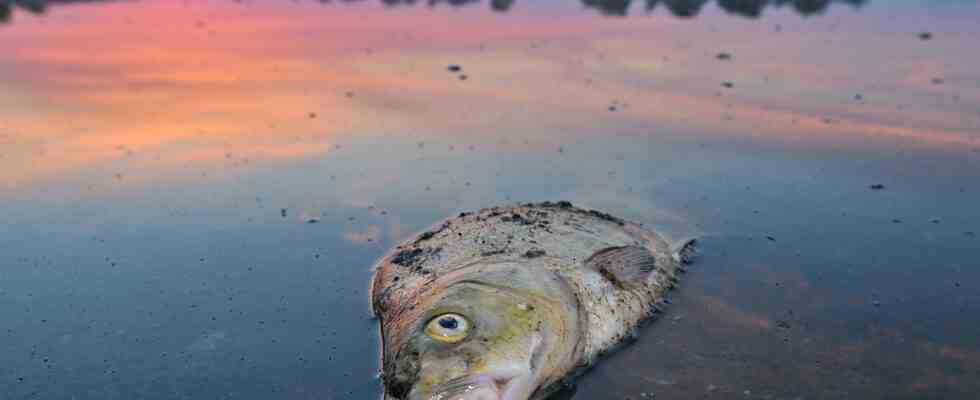As of: 08/19/2022 6:28 p.m
It is still unclear what caused the death of fish in the Oder – and why the reporting system failed. As the disaster slowly moves downriver, government agencies and environmentalists seek answers.
It was Tuesday, July 26, when heaps of dead fish swam in the Oder in Poland for the first time. Near the small town of Olawa, fishermen discovered hundreds of carcasses in the river. They also took samples and handed them over to the local authorities.
Then, at least publicly, nothing happened. The samples have now disappeared and there are no results. It is only one of several possible traces that have not yet been elucidated. However, there is some evidence that the incident near Olawa has nothing to do with the large fish kill along the Oder that followed later. After that, almost two weeks go by with no reports of dead fish.
But then – about 170 kilometers downstream, behind Glogow – tons of carcasses suddenly float down the Oder. According to the Polish Prime Minister, he only found out about this on August 9th. The public will be informed a day later. At this point, according to the currently most common theory, the catastrophe has already happened.
Paddle tour with dead fish
On the day the Polish government made the death of fish public, Sascha Maier was paddling along the Oder. He is a member of the Brandenburg State Association of the Federation for the Environment and Nature Conservation (BUND). After passing Glogow, he rests at the bank’s edge. And sees the first signs of the catastrophe: “At Glogow we saw dead fish and mussels. A lot of dead fish floated down the river,” he says.
His report coincides with what is officially known: behind Glogow, the fish kill was already in full swing. Up to this point, the authorities had not reported anything to Germany.
“Actually, the alarm plan should have been triggered by the Polish side beforehand,” says Maier. Especially since it was still completely unclear whether the Oder water could also be dangerous for humans. But there were no warnings, and paddlers like Maier were able to navigate the river unsuspectingly.
Copperworks under suspicion
It was only a week after Poland’s government went public that a Polish politician reported something astounding: he had learned that discharges from a tailings pond flowed into the Oder between July 29 and August 10. Where? Just past Glogow.
The wastewater comes from the settling tank of a copper smelter belonging to the Polish mining group KGHM (KGHM Polska Miedz). The high salinity, which was later also determined by the German side in the Oder, could have its origin here. The algae contamination, which has now been confirmed, could also be explained in this way.
Maier sees the potentially decisive omissions here: “You should have taken samples directly during the introduction at Glogow.” Whether that happened is unclear. Instead, dead fish apparently swam in the Oder for days – without Germany being informed about the reporting system.
reporting system ignored
Maier sees things this way: The regulations make sense and are sufficient – but if not everyone adheres to them, they are of no use either: “There is a clear emergency plan for the Oder. However, this was not triggered by the Polish side – although everything spoke in favor of that it had to be done.”
The truth about the origin of the disaster, apparently, can only be found on the Polish side. After the experiences of the last few weeks, Maier is not convinced that it will come to light: “I would not bet that we would really find out what happened. The theory that it is mainly due to the algae sounds scientific very plausible.”

